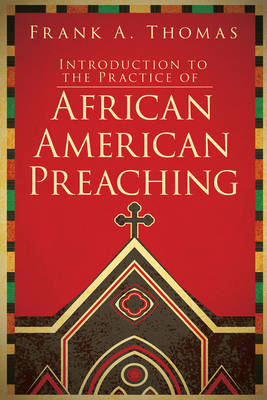
Je cadeautjes zeker op tijd in huis hebben voor de feestdagen? Kom langs in onze winkels en vind het perfecte geschenk!
- Afhalen na 1 uur in een winkel met voorraad
- Gratis thuislevering in België vanaf € 30
- Ruim aanbod met 7 miljoen producten
Je cadeautjes zeker op tijd in huis hebben voor de feestdagen? Kom langs in onze winkels en vind het perfecte geschenk!
- Afhalen na 1 uur in een winkel met voorraad
- Gratis thuislevering in België vanaf € 30
- Ruim aanbod met 7 miljoen producten
Zoeken
€ 48,95
+ 97 punten
Omschrijving
The Introduction to African American Preaching is an important, groundbreaking book. This book acknowledges African American preaching as an academic discipline, and invites all students and preachers into a scholarly, dynamic, and useful exploration of the topic. Author Frank Thomas opens with a "bus tour" study of African American preaching. He shows how African American preaching has gradually moved from an almost exclusively oral to an oral/written tradition. Readers will gain insight into the history of the study of the African American preaching tradition, and catch the author's enthusiasm for it. Next Thomas traces the relationship between homiletics and rhetoric in Western preaching, demonstrating how African American preaching is inherently theological and rhetorical. He then explores the question, "what is black preaching?" Thomas introduces the reader to methods of "close reading" and "ideological criticism." And then demonstrates how to use these methods, using a sermon by Gardner Calvin Taylor as his example. The next chapter considers the question, "what is excellence in black preaching?" The next chapter seeks to create bridges and dialogue within the field of homiletics, and in particular, the Euro-American homiletic tradition. The goal of this chapter is to clearly demonstrate connections between the African American preaching tradition and the field of homiletics. Thomas next turns to questions about the relevancy of the church to the Millennial generation. Specifically, how will the African American church remain relevant to this generation, which is so deeply concerned with social justice?
Specificaties
Betrokkenen
- Auteur(s):
- Uitgeverij:
Inhoud
- Aantal bladzijden:
- 202
- Taal:
- Engels
Eigenschappen
- Productcode (EAN):
- 9781501818943
- Verschijningsdatum:
- 15/11/2016
- Uitvoering:
- Paperback
- Formaat:
- Trade paperback (VS)
- Afmetingen:
- 150 mm x 226 mm
- Gewicht:
- 294 g

Alleen bij Standaard Boekhandel
+ 97 punten op je klantenkaart van Standaard Boekhandel
Beoordelingen
We publiceren alleen reviews die voldoen aan de voorwaarden voor reviews. Bekijk onze voorwaarden voor reviews.









